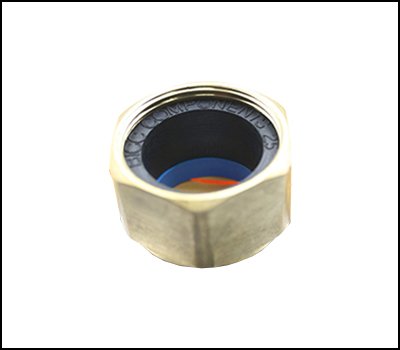Becoming one of the market players of 2016, the cable gland market goes parallel to the technology trends. It has now become one of the most preferred choices and a prime component of wire management system that has its applicability in all the electronic instruments. Cable gland is an entryway to cables with a fine mechanical structure of metal/non-metallic components. It has a far reaching application in all the dominant sectors across the globe involving a syndicate of electrical and automated systems and instrumentation with cables and wirings high in usage. For risky and heavy duty projects were electrical safety measures are at the rim of the basket to avoid flammable destruction of the assets, cable glands are installed after passing through various types of testing methods that ensures durability and high quality product. This informative article brings out deep insight into the cable glands, functions of cable glands, its types and the various methods and installation techniques used by the manufacturer that strives to provide optimum safety solution for your cable assignments.
Cable glands, fittings and accessories are used to shell the cables from uncertain environmental reactions. The cable connectors are the central means of controlling the cost of destruction of an electrical asset vis-a-vis the cost of installing protective cable glands to avoid destruction. It is mainly used for the retention of cables connected to the electrical instruments and to cover it with a protective seal component that can well sustain even in case of hazardous climates. They have multiple features that protect the cable from the uncertain weather conditions or dust and moisture, to perfectly connect the electronic devices, to fusion the integrity of the enclosure, to avoid the twisting of cables and in case of armoured cables it is also rich in features with earth continuity functions. In short, it provides strain relief, grounding, insulation and bonding to the cables connecting to the electrical equipments.
Furthermore, the selection of the types of cables is at the nucleus by considering the materials to be used, gland size, type of thread required, functions of cable gland and the purpose of its usage. Basically the cable glands are of two types (ie) Unarmoured cable glands for the ingress protection and high level of retention with the outer seal within the gland and armored cable glands for clamping mechanism that has an outer sealing within the sheath. The types of cable glands are outlined as under:
Barrier gland is used in case of flameproof devices that has a high magnitude of the explosion were enclosure have more than two units of cable diameter volume and consisting of a resin sealed sleeve in the gland. Brass indoor cable gland or outdoor type cable gland has a fine coated shield to a rubberized cable, plastic cable or a metal cable that is economical, time saving and handy with dry indoor/outdoor cable sealing suitable for single wire armoured cables. For non-armoured cables, A2 type cable glands with fully extruded fillers are highly in use that has a perfect sealing on the outer sheath. Suitable for SWA cables, weather proof cable glands have inner and outer sheath sealed with the compression and displacement techniques. Dimensional PG threaded cable gland is a customized cable connector that can be applied as a coating to different shaped cables. The industrial cable gland is suitable for wire braid armoured cables were in single and double compression sealing techniques are used.
Methods and Installation of Cable Glands:
The commonly used wiring methods include rigid conduit, armoured and non armoured methods. In conduit system, the joints of cable are sealed with cable fittings. While the construction of the cable system should be as per the Ex ‘d’ method of protection. The method of wiring and type of construction of a cable gland is decided after a detailed research on the needs, purpose and criteria to be considered for installation of a cable gland. These considerations include the level of flammability, reduced flame spread, low smoke, corrosive fumes, acid gas emission, low emission of noxious fumes and circuit integrity.
Installation of cable glands can be done in many ways. The cable gland can be installed by direct entry via EEx ‘d’ gland, indirect entry via EEx ‘e’ enclosure or direct entry via EEx ‘d’ conduit. Before the installation stage, various types of testing methods are used to maintain the quality standards and durability of the glands. Test for cable gland retention were in a mandrel is loaded in circulatory motion, the cable anchorage test which is used in case of non armoured cables were a test mandrel that has an accurate level of the anchorage range of cable gland is fixed with a sample, the cable anchorage pull test is used for testing the twist capacity of the cable and resistance to impact test is applied to check the resistance of the cable glands with a sealing system.
With the installation and different manufacturing methods of cable glands, it is also vital for the cable gland to have feature rich functionalities. The recent investigations worldwide is addressed in new innovations to take an extra step in maintaining the safety and protection standards. There is an upward slope marked in implementing the Lean Method and Kaizen Method of manufacturing cable gland in business philosophy.
To get consultation about a perfect fix for your cable assignments, visit https://www.bicccomponents.uk.com/
 SUBSCRIBE TO OUR BLOG
SUBSCRIBE TO OUR BLOG
